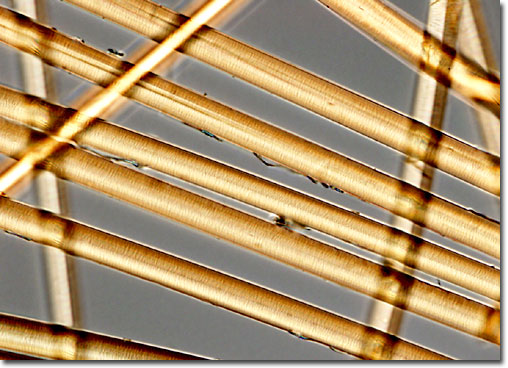|
Sometimes referred to as a Space Age material, it is the chemical structure and processing of Kevlar that makes it so strong. More specifically, Kevlar contains both aromatic and amide molecular groups. When molten Kevlar is spun into fibers at the processing plant, the polymers produced exhibit a crystalline arrangement, with the polymer chains oriented parallel to the fiber's axis. The amide groups are able to form hydrogen bonds between the polymer chains, holding the separate chains together like glue. Also, the aromatic components of Kevlar have a radial orientation, which provides an even higher degree of symmetry and strength to the internal structure of the fibers.
|
